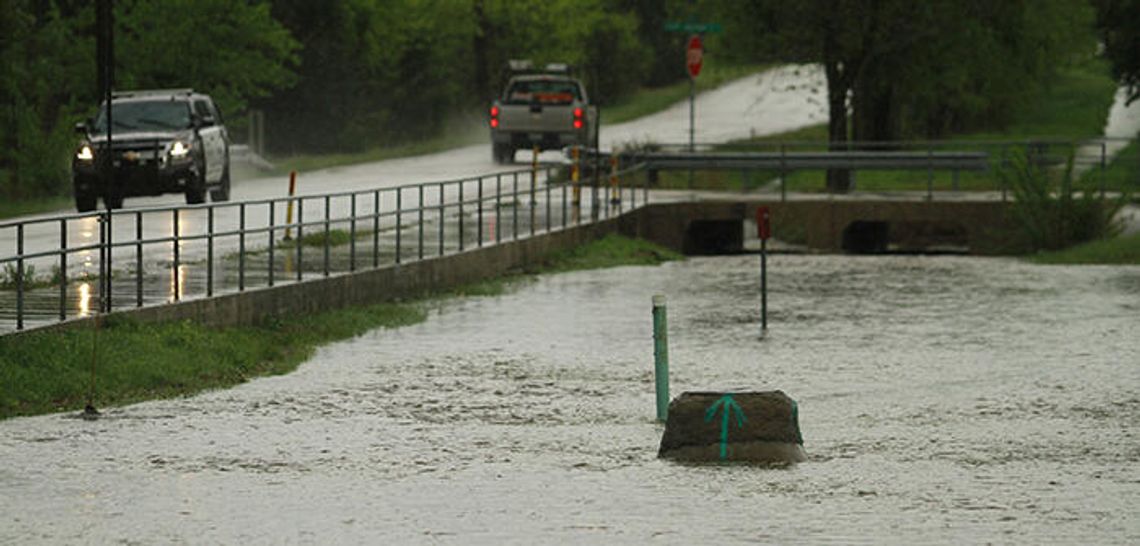Updating flood prevention measures for new development drove Kyle city leaders May 15 to approve of a handful of ordinance changes on the matter.
But even with those alterations in hand, Kyle city officials worry the Federal Emergency Management Administation’s (FEMA’s) upcoming overhaul of its flood maps could call for additional updates in the future.
Leon Barba, Kyle city engineer, said one ordinance change will require development standards to build at the 100-year flood plain. Previous language only required developers to design structures at the 25-year flood plain, which Barba said is an outdated practice.
Leon Barba, Kyle city engineer, said one ordinance change will require development standards to build at the 100-year flood plain. Previous language only required developers to design structures at the 25-year flood plain, which Barba said is an outdated practice.
While Barba was unsure as to why the city didn’t raise its standards in the past, he said the city recently looked into changing its ordinances as they began various infrastructure improvements. Additionally, Barba said developers typically design projects to meet the 100-year flood plain, which he said is “the right thing to do from an engineering standpoint.”
“We weren’t in a hurry to change it because it wasn’t a big issue,” Barba said. “But as we started to fix stuff and improve things, that was one of the low hanging fruit. This is easy and it’s not a big deal.”
City staff also sought to amend language on building structures above the 100-year flood plain as well. Barba said the problem with the current ordinance was that it didn’t give “flexibility” for flood events that went beyond the 100-year plain.
Barba said officials looked at other cities in the area, such as Wimberley, Buda, Austin and San Marcos, and how they handled flood plain elevation (FTE) language in their ordinances. Barba said the city of Austin recently included language requiring new development to go two feet above the 100-year flood plain in the downtown sector.
In Kyle, developers will be required to build structures at a minimum of two feet above the 100-year or at the 500-year flood plain, or whichever is the highest.
Barba said having the FTEs offers “freeboard,” or a safety factor, that engineers believe could help to reduce the flooding impact for residents.
“This is something we should have looked at a long time ago,” Barba said.
But several factors might call for more language and possibly project changes in the future. One extends to the city’s $177,500 Drainage Master Plan, which was created to outline potential costs for areas that need drainage improvement.
Once Kyle obtains the DMP later this summer, Barba said city officials will look at their existing ordinances and see if there are any other alterations or additions needed.
“There are going to be more recommendations we bring to the city council,” Barba said. “This is just the beginning.”
In addition, Kyle, along with cities in Hays and Travis counties, are waiting for a long-awaited overhaul of FEMA flood maps, which were last updated in 2005. Cities are also waiting on possible changes to area rainfall maps, which were updated in 2017.
As a result, the city is looking at a possible outreach program to make residents aware they could be impacted by the FEMA update. However, Scott Sellers, Kyle city manager, said FEMA would continue to use its 2005 maps until the updates are approved later this year.
Kyle’s ordinance changes won’t require residents to obtain flood insurance, which is based off of FEMA maps.
But the changes could impact existing infrastructure projects, Barba said. Depending on how FEMA or rainfall maps are implemented, Kyle could seek to alter the scope of its drainage improvements.
“We are not the only ones scrambling to find out what information to use to design drainage structures,” Barba said. “It’s going to have a significant impact on our design and the structures we build.”










